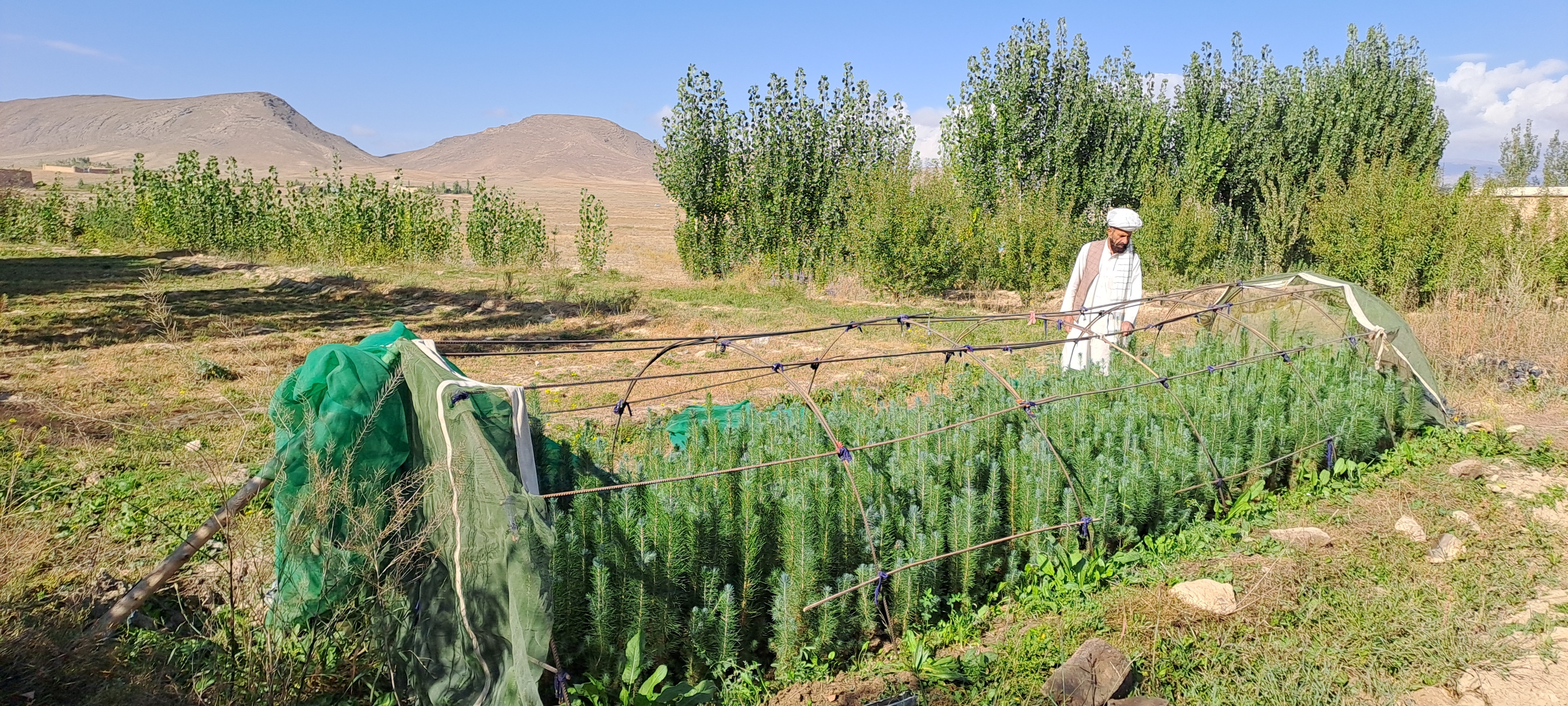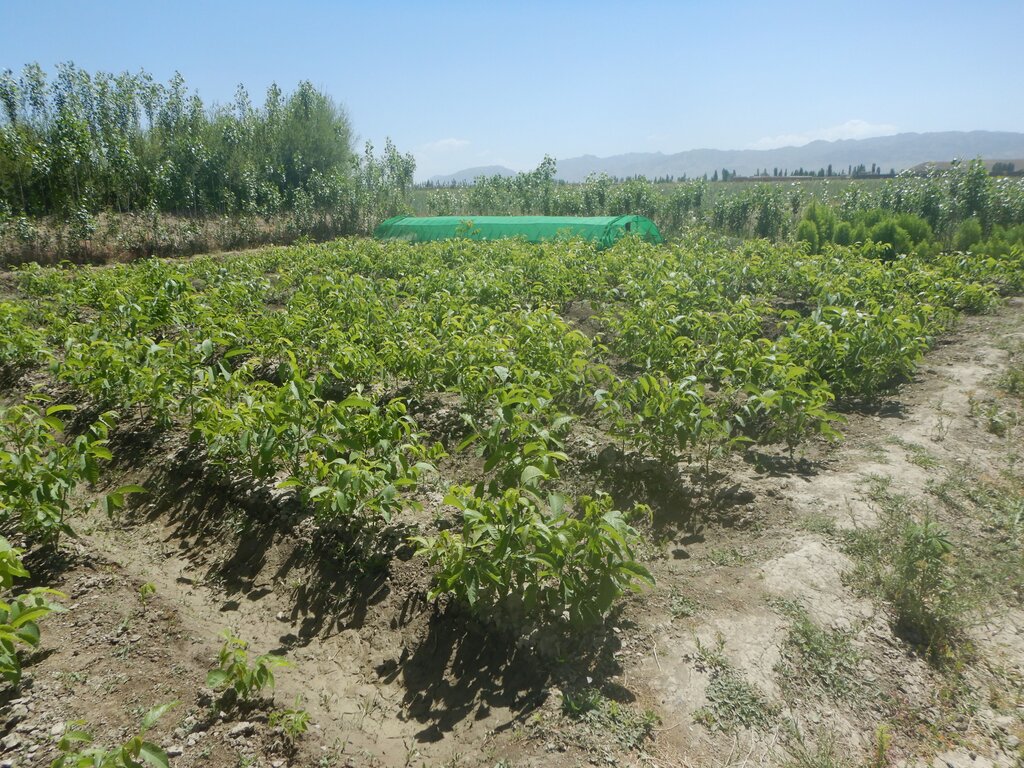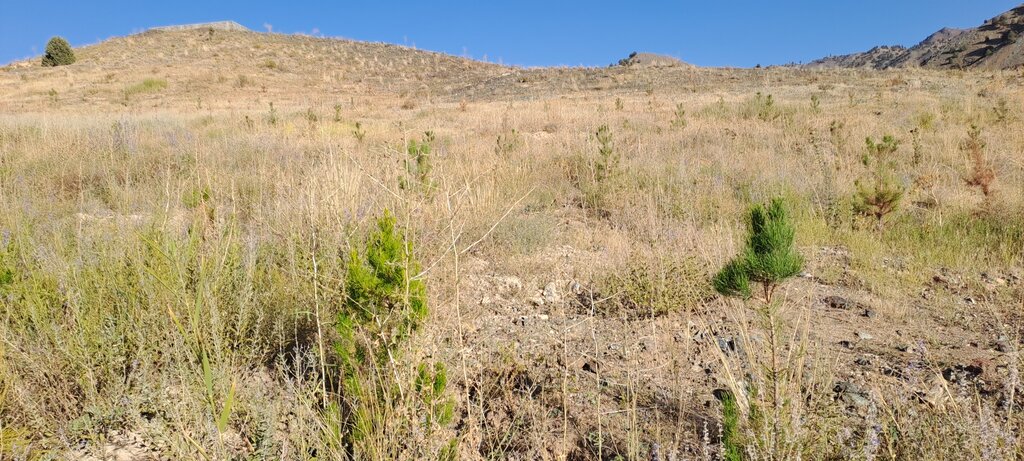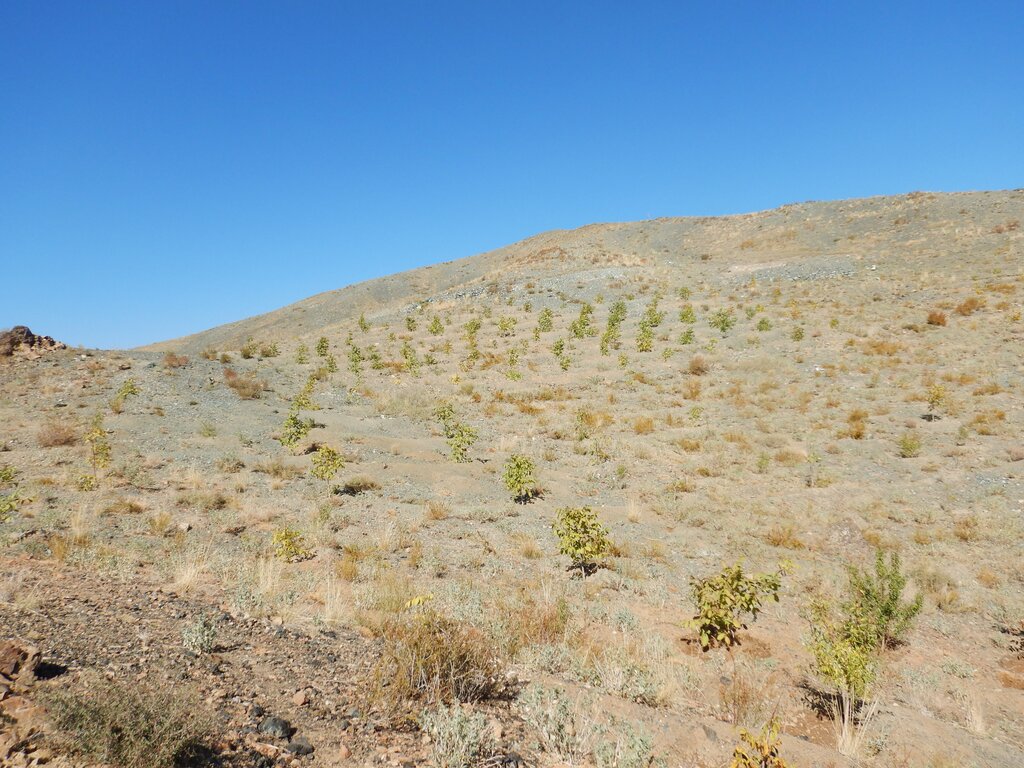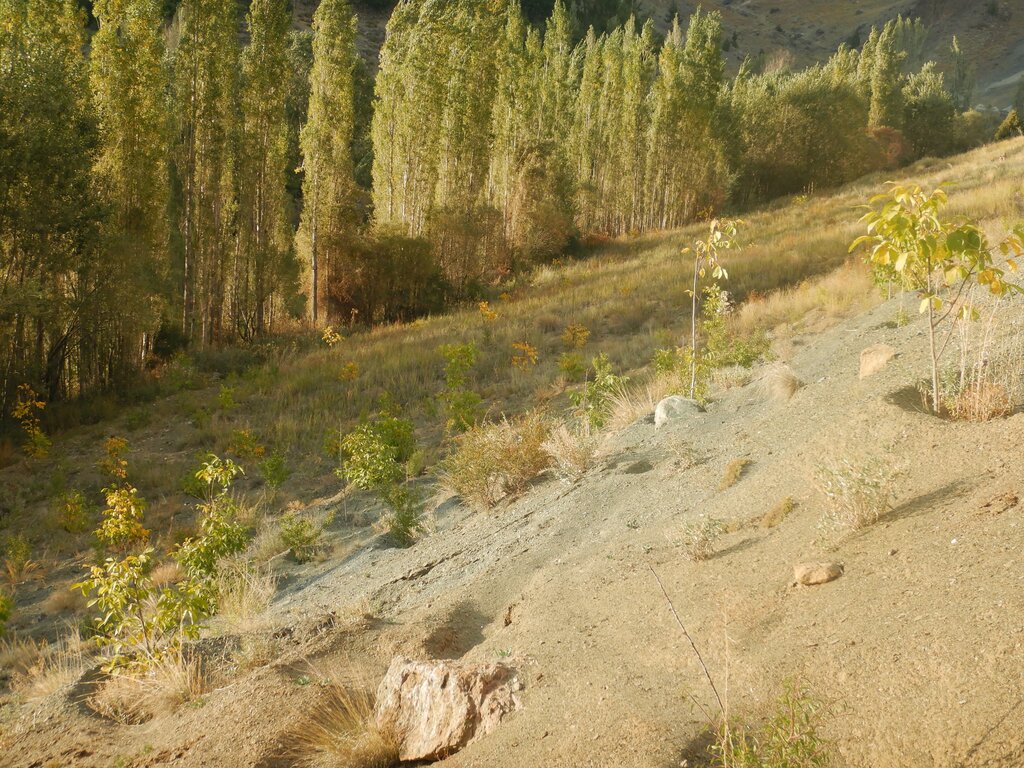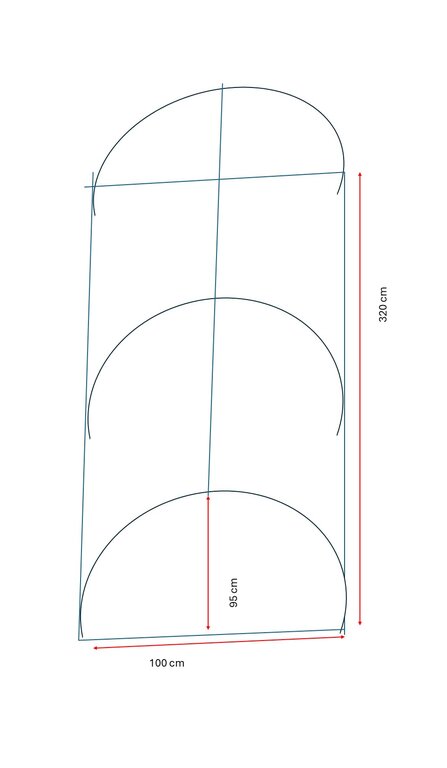Restoration in the High Conservation Value Forests (HCVF) through community-led initiatives in Paktya [Афганистан]
- Создание:
- Обновить:
- Составитель: Mohammad Wazir Ahmadzai
- Редакторы: Mir Wali Khan Lakanwal, Mohammad Mustafa Sahebzada, Megha Bajaj, Megha bajaj
- Рецензенты: Rima Mekdaschi Studer, Illias Animon, Muhammad Ishaq Safi
Chilghuza and Nakhter
technologies_7454 - Афганистан
- Полная аннотация в формате PDF
- Полная аннотация в формате PDF для вывода на печать
- Полная аннотация в формате интернет-страницы
- Полная аннотация (неотформатированно)
- Restoration in the High Conservation Value Forests (HCVF) through community-led initiatives in Paktya: 5 марта 2025 г. (inactive)
- Restoration in the High Conservation Value Forests (HCVF) through community-led initiatives in Paktya: 24 марта 2025 г. (inactive)
- Restoration in the High Conservation Value Forests (HCVF) through community-led initiatives in Paktya: 7 мая 2025 г. (public)
Просмотреть разделы
Развернуть все Свернуть все1. Общая информация
1.2 Контактные данные специалистов и организаций, участвующих в описании и оценке Технологии
Ответственный (-ые) специалист (-ы)
землепользователь:
Sayed Hakim Shah
Forest management Association
Афганистан
землепользователь:
Sabawon Samiullah
Forest mangemnet Association
Афганистан
Название проекта, содействовавшего документированию/оценке Технологии (если применимо)
Community-based sustainable land and forest management in AfghanistanНазвание организации (-ий), содействовавших документированию/оценке Технологии (если применимо)
FAO Afghanistan (FAO Afghanistan) - Афганистан1.3 Условия, регламентирующие использование данных, собранных ВОКАТ
Составитель и ответственный(-ые) специалист(-ы) согласны с условиями, регламентирующими использование собранных ВОКАТ данных:
Да
1.4 Декларация по устойчивости описываемой Технологии
Вызывает ли описанная здесь Технология проблемы деградации земель настолько, что ее нельзя назвать природосберегающей?
Нет
2. Описание Технологии УЗП
2.1 Краткое описание Технологии
Определение Технологии:
An integrated community-led initiative has been established to restore the degraded forests in Paktya province. This initiative focuses on setting up nurseries and incorporates both indigenous and scientific knowledge to cultivate climate-resilient species, such as Cedrus deodara and Pinus gerardiana. These efforts have enhanced the community’s knowledge and skills in sapling production and transplantation, leading to significant improvements in the productivity of these key species, which holds substantial ecological, social, cultural and economic values.
2.2 Подробное описание Технологии
Описание:
The technology is applied in the communities of Ahmad Aba and Sayed Karam districts in the Paktya province, focusing on restoration of high conservation value forests. It is implemented through direct support of 13 Forest Management Associations (FMAs).
Key members of FMA participated in capacity building focused on community -based natural resources management (CBNRM), establishment of community-based nurseries and restoration of degraded forest .The aim of the capacity building initiative was to enhance the ability of the associations to restore the degraded area and implement sustainable practices, particularly through establishment of community-based nurseries, production of saplings and subsequent planting of these saplings in targeted restoration sites .
Over the past three years, 67 nurseries have been established, focusing on climate- resilient species such as Cedrus deodara, Pinus jerardiana, and Juglans regia, among others species by integrating both indigenous and scientific knowledge. Indigenous knowledge includes practices such as pre-irrigation, the use of animal-powered initial plowing with hand-held hoes, weed removal, and other traditional techniques. Scientific recommendations include improvement of sapling production, adaption of soil inoculation with Mycorrhiza, species-specific sowing methods, controlled temperature management in greenhouses, effective watering/irrigation techniques (manually and using sprinklers).
The project has significantly enhanced sapling production and transplantation for reforestation purposes. The community-based nurseries were established using carefully selected seeds, chosen based on seed quality, sowing timing, and the process of breaking seed dormancy. Saplings were then raised in the nurseries for the first 2 to 3 years until, they are ready for transplantation. These saplings are then transplanted to the degraded forest areas. The land preparation and digging of pits were carried out in the restoration sites before transplanting saplings. After transplanting, FMAs took care of the saplings. Additionally, mechanical pests and diseases control measures were employed to produce good-quality saplings in community-based nurseries. These interventions raised community awareness on forest condition and management and thereby enhanced their capacities to improve the forest cover.
Major activities include site assessment and pre-planning, selection of high conservation value tree species, site selection, technical training on site management (preparation of soil, sowing method, irrigation management, greenhouse) and capacity building of the communities and beneficiaries on nursery soil mixture preparation, breaking of dormancy using different techniques, sapling production and transplantation.
The 13 Forest Management Associations (FMAs) are the legal institutions for the management of natural resources; they hold a license for reforestation activities in degraded forests. They are officially registered with Ministry of Agriculture, Irrigation and Livestock (MAIL). FMAs are responsible for implementing the restoration measures. These communities showed commitments for the transplantation, irrigation and regular patrolling of the saplings.
The goal of the restoration efforts is to enhance the capacity of the local community on methods of in-situ and ex-situ biodiversity conservation and creation of a recreational site. It also aimed to raise the awareness towards mitigation of climate change, and ultimately improve the livelihoods of rural populations. The application of technologies offers cost-effective and eco-friendly restoration of the high conservation value forest especially of pine (Pinus jerardiana) and deodar (Cedrus deodara). Additionally, it provided work opportunities and income generation for 100 families. The technology is well-suitable for replication and adaptation in the local context. As a result, the local community consistently produces the necessary saplings for reforestation and supplies them to the project at a reasonable cost every year.
2.3 Фотографии, иллюстрирующие Технологию
2.4 Видеоматериалы, иллюстрирующие Технологию
Дата:
09/12/2024
Место:
Afghanistan
Автор съемки:
Mohammad Wazir Ahmadzai
2.5 Страна/ регион/ места, где применяется Технология, информация о которых собрана в данной Анкете
Страна:
Афганистан
Административная единица (Район/Область):
Paktya
Более точная привязка места:
Ahmad Aba and Sayed Karam
Охарактеризуйте пространственное распространение Технологии :
- примененяется точечно/ на небольших участках
Технология применяется на ООПТ?
Нет
Пояснения:
In each forest management association, five community-based nurseries have been established, each covering less than 0.004 hectares. Once the saplings are ready for transplantation, typically after 2 to 3 years, they are transported from the nurseries to the restoration sites for planting. A total of 2,718 hectares of forest area have been restored in both Ahmad Aba and Sayed Karam districts. Community-based nurseries have been established in various villages and are being scaled up through the nursery owners to produce the saplings required for reforestation. The map highlights only these two districts.
Map
×2.6 Сколько лет применяется данная Технология
Год начала реализации:
2021
2.7 Внедрение Технологии
Укажите, как именно Технология УЗП была внедрена:
- через проекты/ внешнее вмешательство
3. Классификация Технологии УЗП
3.1 Основные цели и задачи реализации Технологии
- снижение или предотвращение деградации земель, восстановление нарушенных земель
- сохранение экосистем
- сохранение/ повышение биоразнообразия
- адаптация к изменению климата / экстремальным погодным явлениям и их последствиям
- создание благоприятных экономических условий
3.2 Текущий(-ие) тип(-ы) землепользования на территории, где применяется Технология
Комбинированное землепользование в пределах одной и той же земельной единицы:
Нет

Леса/ лесистая местность
- Лесопосадки, облесение
Лесопосадки. облесение: Укажите происхождение и состав видов:
- Смешанные культуры
Тип лесонасаждений, облесение:
- субтропическая сухая лесная плантация - Pinus spp.
Вид деревьев:
- Вид сосны (сосна)
Являются ли указанные выше деревья лиственными или вечнозелеными?
- смешанные лиственные / вечнозеленые
Продукции и услуги:
- Древесина
- Дрова
- Плоды и орехи
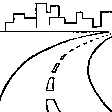
Населенные пункты, инфраструктура
- plastic tunnels in nurseries
Замечания:
The community-based nurseries are established in the village near to the forest areas.
3.3 Изменилось ли использование земель в связи с внедрением Технологии?
Изменилось ли использование земель в связи с внедрением Технологии?
- Нет (см. пункт 3.4)
3.4 Водоснабжение
Обеспеченность водой участков, где реализуется Технология :
- сочетание богарных и орошаемых земель
Пояснения:
Nurseries are irrigated. After transporting saplings, supplementary irrigation is required till five years. After the establishment of saplings, rainfed irrigation is enough.
3.5 Категория УЗП, к которой относится Технология
- лесное хозяйство в лесопосадках
- Улучшение почвенного/ растительного покрова
- сбор атмосферных осадков
3.6 Мероприятия УЗП, выполняемые в рамках Технологии

Мероприятия с использованием растительности
- Р1: Древесный и кустарниковый покров

инженерные мероприятия
- И1: Террасирование
- И4: Выровненные и спланированные канавы, ямы
3.7 Основные проблемы деградации земель, на решение которых направлена Технология

водная эрозия почв
- ВЭп: поверхностная эрозия/смыв верхних почвенных горизонтов

ветровая эрозия почв
- Эп: утрата плодородного слоя почвы
3.8 Предотвращение и снижение деградации земель, или восстановление нарушенных земель
Укажите цель Технологии по отношению к деградации земель :
- снижение деградации земель
- восстановление/ реабилитация нарушенных земель
4. Технические характеристики, мероприятия по практической реализации, вложения и стоимость
4.1 Технический рисунок, иллюстрирующий Технологию
Спецификация (пояснения к техническому рисунку):
All the saplings are grown under plastic tunnels, except for walnut, which is cultivated on raised beds (see photo). The technical drawing shows a prototype of the plastic tunnels used in the nursery. The plastic tunnel are constructed with dimensions of 95 cm in height, 100 cm in width, and 320 cm in length. During the winter, the saplings in the polybags under the tunnel are covered with transparent plastic to protect the saplings from the cold and in the summer, the plastic is removed and replaced with green netting to protect the saplings from overheating inside the tunnel and providing shade. The tunnels are oriented in a north-south direction to optimize exposure to daily sunlight. The selected area for plastic tunnel establishment was flat and at lower altitude minimizing the severe impacts of wind, sunlight, rain fall, snow fall and climate change.
Ventilation holes were installed on both ends of the tunnels to ensure optimal air circulation, promoting healthy plant growth and development. Each tunnel’s construction utilized 15 kilograms (kg) of 12 mm steel bars. Additionally, a green net with a width of 4 meters, along with 15 square meters of plastic (10 % transparent and 1 mm thick) was required to cover the tunnels. After 2 to 3 years, then the saplings are transplanted to restoration sites. Based on our practice, Pinus saplings are cultivated with a spacing of 5 meters between rows and 5 meters between plants. This arrangement ensures that 400 saplings will cover 1 hectare of land. For walnut saplings, we plant 100 saplings per hectare, with a spacing of 10 meters between rows and 10 meters between plants.
Автор:
Mohammad Wazir Ahmadzai
Дата:
18/12/2024
4.2 Общая информация по необходимым вложениям и стоимости
Уточните, как рассчитывались затраты и вложения:
- на технологическую единицу
Укажите единицу:
1 plastic tunnel
Укажите денежные единицы, использованные для подсчета затрат:
- Доллары США
Укажите среднюю дневную заработную плату наемных работников:
5 USD
4.3 Мероприятия, необходимые для начала реализации
| Деятельность | Время (сессия) | |
|---|---|---|
| 1. | Site assessment and selection for establishing nurseries | October |
| 2. | Land preparation and filling of polybags with soil mixture | November |
| 3. | Purchasing of local seed (Juglans regia, Pinus jerardiana, Pinus eldarica, and Cedrus deodara) | November |
| 4. | Breaking dormancy of seed in soil bed or in room using different techniques | December |
| 5. | Irrigation after seeds are sown in raised beds and polybags | 15, 30, 45 DAY |
| 6. | Construction of plastic tunnels, seeding in raised beds and polybags | November |
| 7. | Transplantation of saplings after 2 to 3 years to the restoration area | March |
Пояснения:
In this section the establishment of nurseries and production of saplings is in focus and not the transplantation of saplings to the areas to be reforested.
4.4 Вложения и затраты, необходимые для начала реализации
| Опишите затраты | Единица | Количество | Затраты на единицу | Общая стоимость на единицу | % затрат, оплаченных землепользователями | |
|---|---|---|---|---|---|---|
| Оплата труда | Land preparation (plowing of land, filling of polybags) | Man-days | 4,0 | 5,0 | 20,0 | 100,0 |
| Оплата труда | Irrigation | Man-days | 8,0 | 5,0 | 40,0 | 100,0 |
| Оплата труда | Construction of tunnel | Man-days | 2,0 | 5,0 | 10,0 | 100,0 |
| Оплата труда | Sowing of seeds | Man-days | 2,0 | 5,0 | 10,0 | 100,0 |
| Оплата труда | Metal worker | Mand-days | 2,0 | 5,0 | 10,0 | |
| Оборудование | Shovels | PC | 4,0 | 3,0 | 12,0 | |
| Посадочный материал | Seed (Pinus jerardiana) | Kg | 2,0 | 12,5 | 25,0 | |
| Посадочный материал | Seed (Pinus elderica) | Kg | 2,0 | 12,5 | 25,0 | |
| Посадочный материал | Seed (Juglans regia) | Kg | 52,0 | 4,0 | 208,0 | |
| Посадочный материал | Seed (Cedrus deodara) | Kg | 1,0 | 12,5 | 12,5 | |
| Удобрения и ядохимикаты | Fertilizer (UREA & DAP) | Kg | 26,0 | 1,0 | 26,0 | |
| Удобрения и ядохимикаты | Mycorrhizal affected soil | Kg | 1000,0 | 0,05 | 50,0 | 100,0 |
| Строительные материалы | Green net | Kg | 25,0 | 7,0 | 175,0 | |
| Строительные материалы | Transparent plastic | Kg | 25,0 | 5,0 | 125,0 | |
| Строительные материалы | Steal bar (12 mm) | Kg | 330,0 | 1,0 | 330,0 | |
| Строительные материалы | Polybags | Kg | 30,0 | 3,0 | 90,0 | |
| Общая стоимость запуска Технологии | 1168,5 | |||||
| Общие затраты на создание Технологии в долларах США | 1168,5 | |||||
Если землепользователем оплачено менее 100% затрат, укажите, кем покрывались остальные затраты:
The project offered material support
Пояснения:
Fertilizer applied at beginning one time
4.5 Поддержание/ текущее обслуживание
| Деятельность | Сроки/ повторяемость проведения | |
|---|---|---|
| 1. | Weed management | frequently |
| 2. | Pest and disease control and management | Frequently |
| 3. | Dead plants are replaced by cultivating seeds in the nurseries (10%) | Second year of cultivation of seeds (spring) |
| 4. | Irrigation | Frequently |
4.6 Стоимость поддержания/ текущего обслуживания ( в год)
| Опишите затраты | Единица | Количество | Затраты на единицу | Общая стоимость на единицу | % затрат, оплаченных землепользователями | |
|---|---|---|---|---|---|---|
| Оплата труда | Weed management | Man days | 6,0 | 5,0 | 30,0 | 100,0 |
| Оплата труда | Pest and disease control and management | Man days | 3,0 | 5,0 | 15,0 | 100,0 |
| Оплата труда | Reseeding for exchanging dead seedlings | Man days | 3,0 | 5,0 | 15,0 | 100,0 |
| Оплата труда | Changing plastic and green net seasonally | Man days | 3,0 | 5,0 | 15,0 | 100,0 |
| Оплата труда | Irrigation | Man days | 10,0 | 5,0 | 50,0 | 100,0 |
| Строительные материалы | Transparent plastic | Kg | 25,0 | 5,0 | 125,0 | |
| Строительные материалы | Green net | Kg | 25,0 | 7,0 | 175,0 | |
| Общая стоимость поддержания Технологии | 425,0 | |||||
| Общие затраты на поддержание Технологии в долларах США | 425,0 | |||||
Если землепользователем оплачено менее 100% затрат, укажите, кем покрывались остальные затраты:
The project covered 100% of the costs for tools and services.
4.7 Наиболее значимые факторы, влияющие на стоимость затрат
Опишите наиболее значимые факторы, влияющие на стоимость затрат:
The most important factors that affect the overall cost are the materials used to construct the plastic tunnel and the cost of seeds.
5. Природные и социально-экономические условия
5.1 Климат
Среднегодовое количество осадков
- < 250 мм
- 251-500 мм
- 501-750 мм
- 751-1000 мм
- 1001-1500 мм
- 1501-2000 мм
- 2001-3000 мм
- 3001-4000 мм
- > 4000 мм
Пояснения/ комментарии по осадкам:
Rainfall was observed from December to March, while the dry period extended from April to August.
Агроклиматическая зона
- Умеренно-влажная
5.2 Рельеф
Склоны (преобладающие):
- пологие (0-2%)
- покатые (3-5%)
- покато-крутые (6-10%)
- крутые (11-15%)
- очень крутые (16-30%)
- чрезвычайно крутые (31-60%)
- обрывистые (>60%)
Формы рельефа:
- плато/ равнины
- гребни хребтов/холмов
- склоны гор
- склоны холмов
- подножья
- днища долин
Зона высотной поясности:
- 0-100 м над уровнем моря
- 101-500 м н.у.м.
- 501-1000 м н.у.м.
- 1001-1500 м н.у.м.
- 1501-2000 м н.у.м.
- 2001-2500 м н.у.м.
- 2501-3000 м н.у.м.
- 3001-4000 м н.у.м.
- > 4 тыс. м н.у.м.
Укажите, приурочено ли применение Технологии к специфическим условиям:
- не имеет значения
5.3 Почвы
Средняя мощность почв:
- поверхностные (0-20 см)
- неглубокие (21-50 см)
- умеренно глубокие (51-80 см)
- глубокие (81-120 см)
- очень глубокие (> 120 см)
Гранулометрический состав (верхнего горизонта):
- грубый крупнозернистый/ лёгкий (песчаный)
- средние фракции (суглинистый, супесчаный)
Гранулометрический состав (на глубине более 20 см):
- средние фракции (суглинистый, супесчаный)
Содержание органического вещества в верхнем горизонте:
- низкое (< 1%)
5.4 Доступность и качество воды
Уровень грунтовых вод:
5-50 м
Доступность поверхностных вод:
средняя
Качество воды (без обработки):
питьевая вода хорошего качества
Качество воды относится к:
одновременно грунтовые и поверхностные воды
Является ли солёность воды проблемой?
Нет
Происходят ли периодические затопления территории?
Нет
5.5 Биоразнообразие
Видовое разнообразие:
- средняя
Разнообразие местообитаний:
- средняя
5.6 Характеристика землепользователей, применяющих Технологию
Осёдлый или кочевой:
- Осёдлый
- Кочевой
Рыночная ориентация производства:
- натуральное хозяйство (самообеспечение)
- смешанный (натуральный / коммерческий)
Доходы из других источников:
- > 50% всех доходов
Относительный уровень достатка:
- средний
- обеспеченный
Индивидуальное или коллективное хозяйство:
- частное/ домовладение
- группа/ община
Уровень механизации:
- ручной труд
- механизировано/ есть автотранспорт
Пол:
- женщины
- мужчины
Возраст землепользователей:
- средний возраст
- пожилой
Укажите другие важные характеристики землепользователей:
Source of off-farm income for land users are private business, livestock, government salary and foreign country employment.
5.7 Средняя площадь земель, используемых землепользователями с применением Технологии
- < 0,5 га
- 0,5-1 га
- 1-2 га
- 2-5 га
- 5-15 га
- 15-50 га
- 50-100 га
- 100-500 га
- 500-1000 га
- 1000-10000 га
- > 10000 га
Считается ли это мелким, средним или крупным хозяйством (по местным масштабам)?
- среднего размера
Пояснения:
Land use rights are determined by the local system, where each village holds usage rights based on their tribal structure, known as 'contribution,' allowing them to benefit from the land. The land used for the nursery is privately owned, while the restored area belongs to the community and is accessible only for those with usage rights.
5.8 Собственность на землю, права на земле- и водопользование
Землевладелец:
- общинная/ поселковая
Право землепользования:
- неограниченное (неконтролируемое)
- общинное (контролируемое)
Право водопользования:
- общинное (контролируемое)
- аренда
Права на землепользование основаны на традиционной правовой системе?
Да
Поясните:
Land use rights are based on the local system. Each village holds land use rights based on their tribal structure, referred to as "contribution," allowing them to derive benefits from their land. The land used for the nursery is privately owned, while the restored area belongs to the community and is accessible only for those with user rights.
Пояснения:
N/A
5.9 Доступ к базовым услугам и инфраструктуре
медицинское обслуживание:
- плохой
- средний
- хорошая
образование:
- плохой
- средний
- хорошая
технические консультации:
- плохой
- средний
- хорошая
занятость (вне хозяйства):
- плохой
- средний
- хорошая
рынки:
- плохой
- средний
- хорошая
электроснабжение:
- плохой
- средний
- хорошая
транспорт и дорожная сеть:
- плохой
- средний
- хорошая
водоснабжение и канализация:
- плохой
- средний
- хорошая
финансовые услуги:
- плохой
- средний
- хорошая
- плохой
- средний
- хорошая
Пояснения:
N/A
6. Воздействия и заключительные положения
6.1 Влияние Технологии УЗП в пределах территории ее применения
Социально-экономическое воздействие
Продуктивность
производство древесины
качество леса/ древостоя
Комментарий/ пояснения:
With restoration of degraded areas, forest/ woodland quality improved, it also becomes a recreational site.
продуктивность недревесных продуктов леса
площадь, используемая для производства продукции
Комментарий/ пояснения:
The production areas increased due to the continued plantation and restoration of areas each year.
Экологическое воздействие
Водный цикл/ поверхностный сток
поверхностный сток
Комментарий/ пояснения:
As the vegetation cover improved, the infiltration of water in the soil improved and the surface runoff reduced.
Почвы
влажность почв
Комментарий/ пояснения:
As the vegetation cover improved, water infiltration in the soil also increased, leading to enhanced soil moisture retention
круговорот/ восполнение питательных веществ
Биоразнообразие: растительность, животный мир
Растительный покров
биомасса/ содержание углерода в надземной биомассе
Комментарий/ пояснения:
As the vegetation cover increased, the above-ground biomass also grew. Since the plantation areas were quarantined for five years, the biomass continued to increase progressively each year.
разнообразие флоры
Комментарий/ пояснения:
The plant diversity increased as the species richness increased with the plantation of different species of trees and providing support to assisting natural regeneration through improved management practices.
разнообразие местообитаний
Комментарий/ пояснения:
The forest cover and biodiversity increased providing habitats for a wider range of plant and animal species.
6.3 Подверженность и чувствительность Технологии УЗП к постепенным изменениям климата и экстремальным погодным явлениям/ стихийным бедствиям, связанным с изменением климата (в понимании землепользователей)
Постепенное изменение климата
Постепенное изменение климата
| Сезон | увеличение или уменьшение | Насколько успешно Технология справляется с этим? | |
|---|---|---|---|
| сезонные температуры | лето | снизилось | умеренно |
| среднегодовое количество осадков | увеличилось | хорошо |
6.4 Анализ эффективности затрат
Насколько получаемый результат сопоставим с первоначальными вложениями (с точки зрения землепользователей)?
Эффективность затрат в краткосрочной перспективе:
слабо позитивное
Эффективность затрат в долгосрочной перспективе:
очень позитивное
Насколько получаемый результат сопоставим с текущими расходами по поддержанию технологии (с точки зрения землепользователей)?
Эффективность затрат в краткосрочной перспективе:
очень позитивное
Эффективность затрат в долгосрочной перспективе:
очень позитивное
Пояснения:
The initial cost of restoration is high when seedlings are purchased from local markets, which increases the cost per hectare. However, if the seedlings are produced in community-based nurseries, the restoration cost decreases significantly due to the lower expenses associated with establishing the nursery and transplanting seedlings from local sources
6.5 Внедрение Технологии
- 1-10%
Среди применяющих Технологию землепользователей, какова доля лиц, применяющих её по собственной инициативе, т.е. без какого-либо материального стимулирования со стороны?
- 11-50%
6.6 Адаптация
Была ли Технология УЗП изменена в недавнее время с целью адаптации к меняющимся условиям среды?
Нет
6.7 Сильные стороны/ преимущества/ возможности Технологии
| Сильные стороны/ преимущества/ возможности по мнению землепользователей |
|---|
| The establishment of nurseries and transplanting of saplings in reforested area was easy to adapt to the local context and has been successfully replicated by others to produce seedlings and support |
| The application of this technology has made it easier to restore the high conservation value forests cost-effectively and created income generation opportunities for the local people. |
| The local community has learned and gained experiences in afforestation and reforestation efforts, becoming familiar with restoration of important species that hold significant economic and ecological value |
| Livelihood of local community has diversified, beyond reliance on private business and traditional agriculture. |
| Сильные стороны/ преимущества/ возможности по мнению составителя или других ключевых специалистов |
|---|
| Prior to the introduction of this technology, saplings were not available in the local market. Now, sapling of high conservation value forest species can be found, although the price remains high at 500 Afghani (AFNs) for each sapling |
| Costs of afforestation have decreased compared to purchasing saplings from neighboring districts |
| The saplings species used were more adaptable to the local climate and have survived well after transplantation |
6.8 Слабые стороны/ недостатки/ риски Технологии и пути их преодоления
| Слабые стороны/ недостатки/ риски по мнению землепользователей | Возможные пути их преодоления/снижения? |
|---|---|
| Initial capital for investment and purchasing goods | Providing subsidy to local community |
| The high price of seeds and their scarcity in local markets | Communities can collect the seed locally and propagate in their own nurseries. |
| Слабые стороны/ недостатки/ риски по мнению составителя или ответственных специалистов | Возможные пути их преодоления/снижения? |
|---|---|
| Nursery management required continuous care and regular follow-up by technical staff. | Regular visit and follow up |
| Insufficient care of the nurseries, such as inadequate weeding and untimely irrigation, can affect the quality saplings. | The owners should be cautious and take care; capacity needs to be built where there are gaps. |
| Irrigation management is most crucial in the nurseries and need extra knowledge of water requirement of the planted species | Conduct water management training for the owners. |
7. Справочные материалы и ссылки
7.1 Методы сбора/ источники информации
- выезды на места, полевые обследования
3 field visits conducted to collect information
- опросы землепользователей
4 land users interviewed using SLM questionnaire
- опросы специалистов/экспертов по УЗП
3 SLM specialists interviewed for gathering information
Когда были собраны данные (на местах)?
31/10/2024
7.3 Ссылки на соответствующую онлайн-информацию
Название/ описание:
There is information available online related to FLR in Afghanistan
Адрес в сети Интернет:
URL https://www.fao.org/in-action/forest-landscape-restoration-asia/country-profiles/afghanistan/afg-gef-project/en#
Ссылки и модули
Развернуть все Свернуть всеСсылки
Нет ссылок
Модули
Нет модулей


